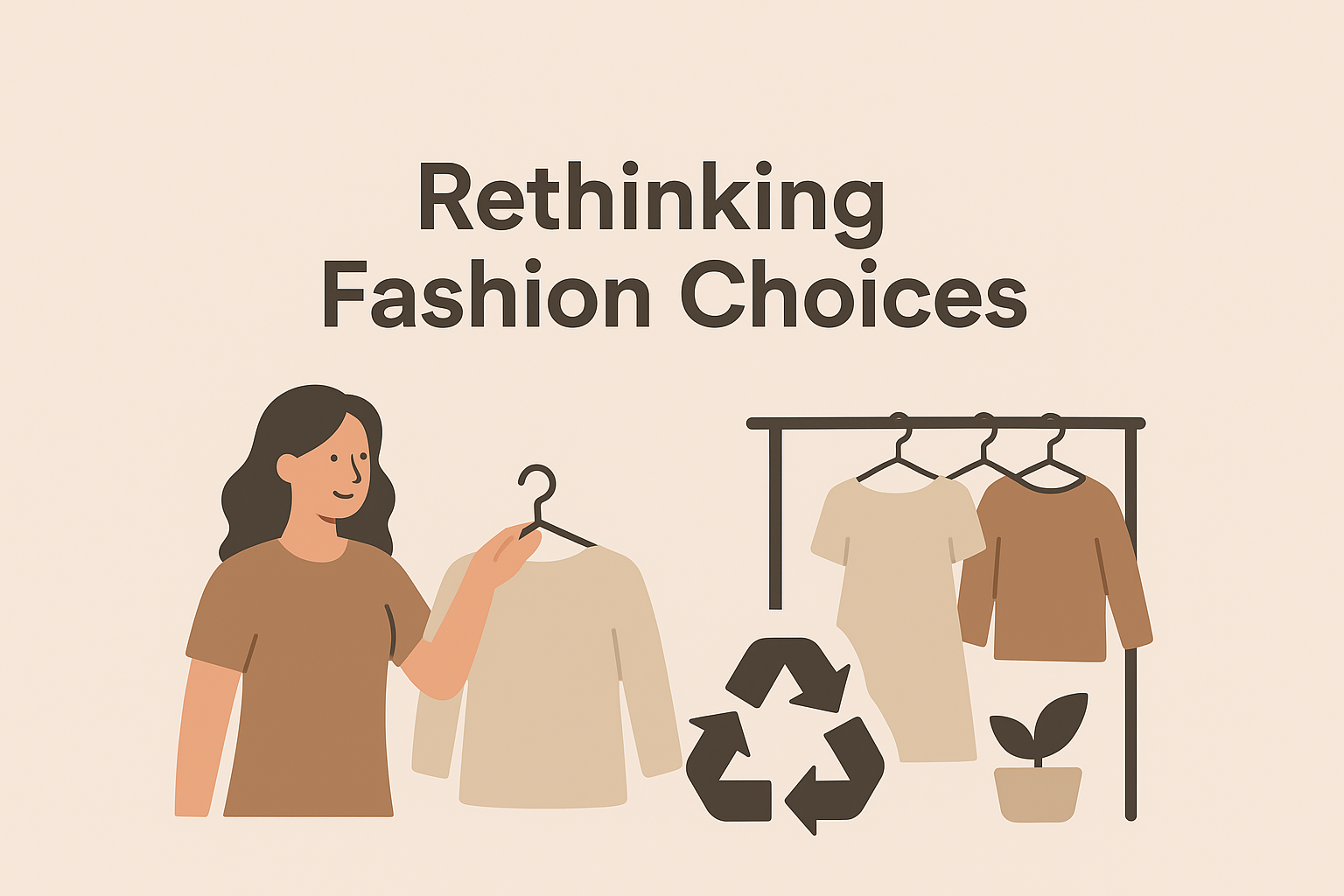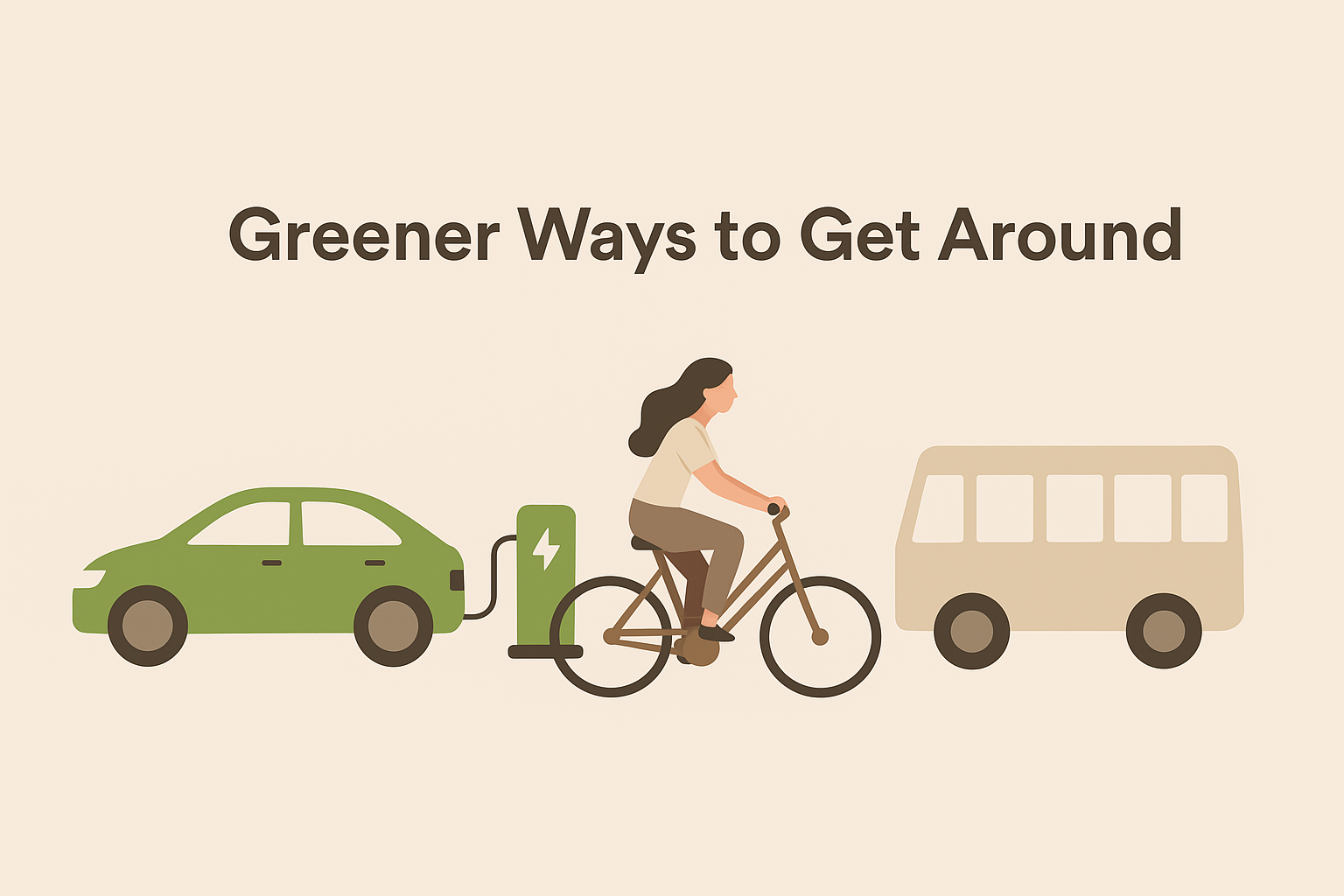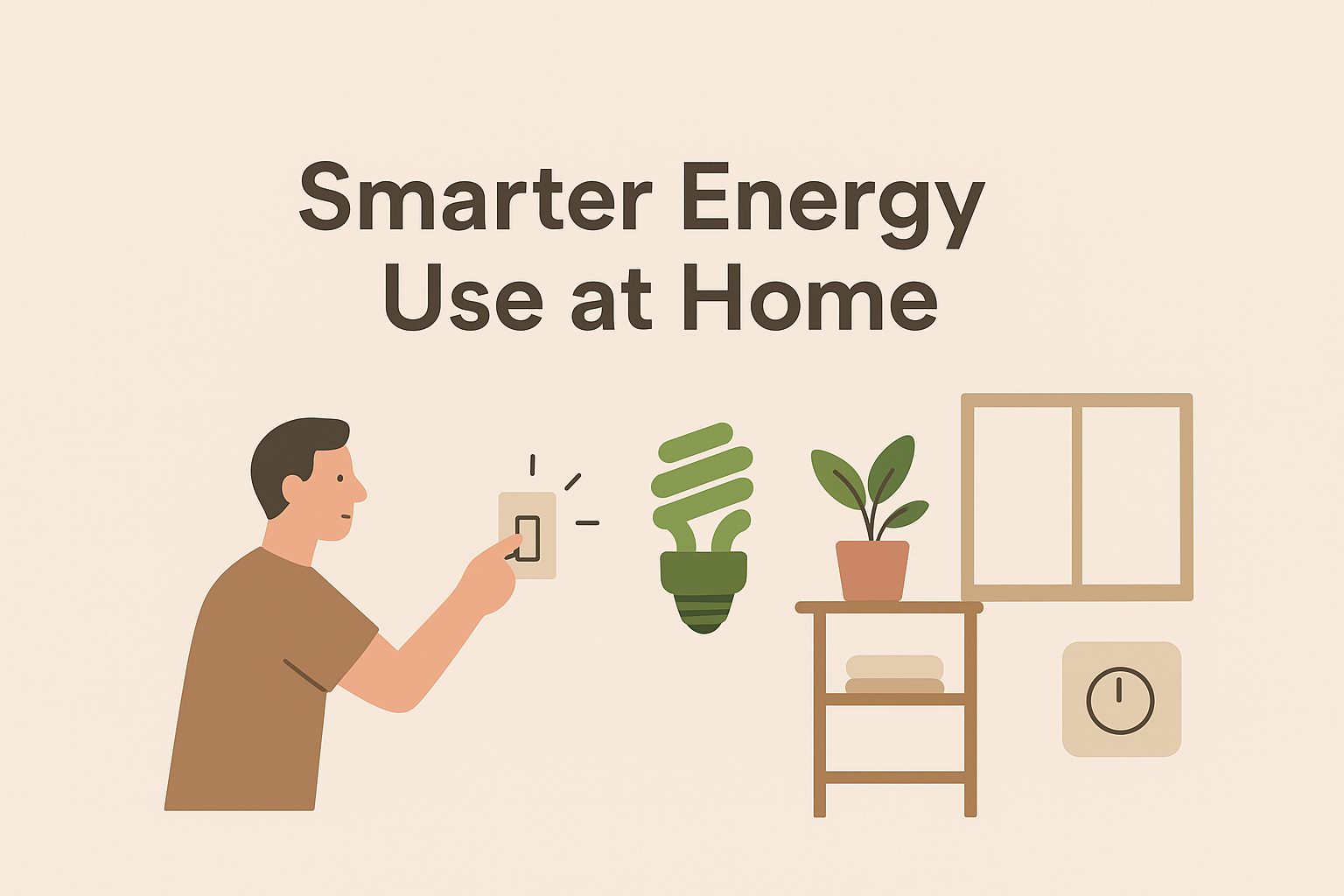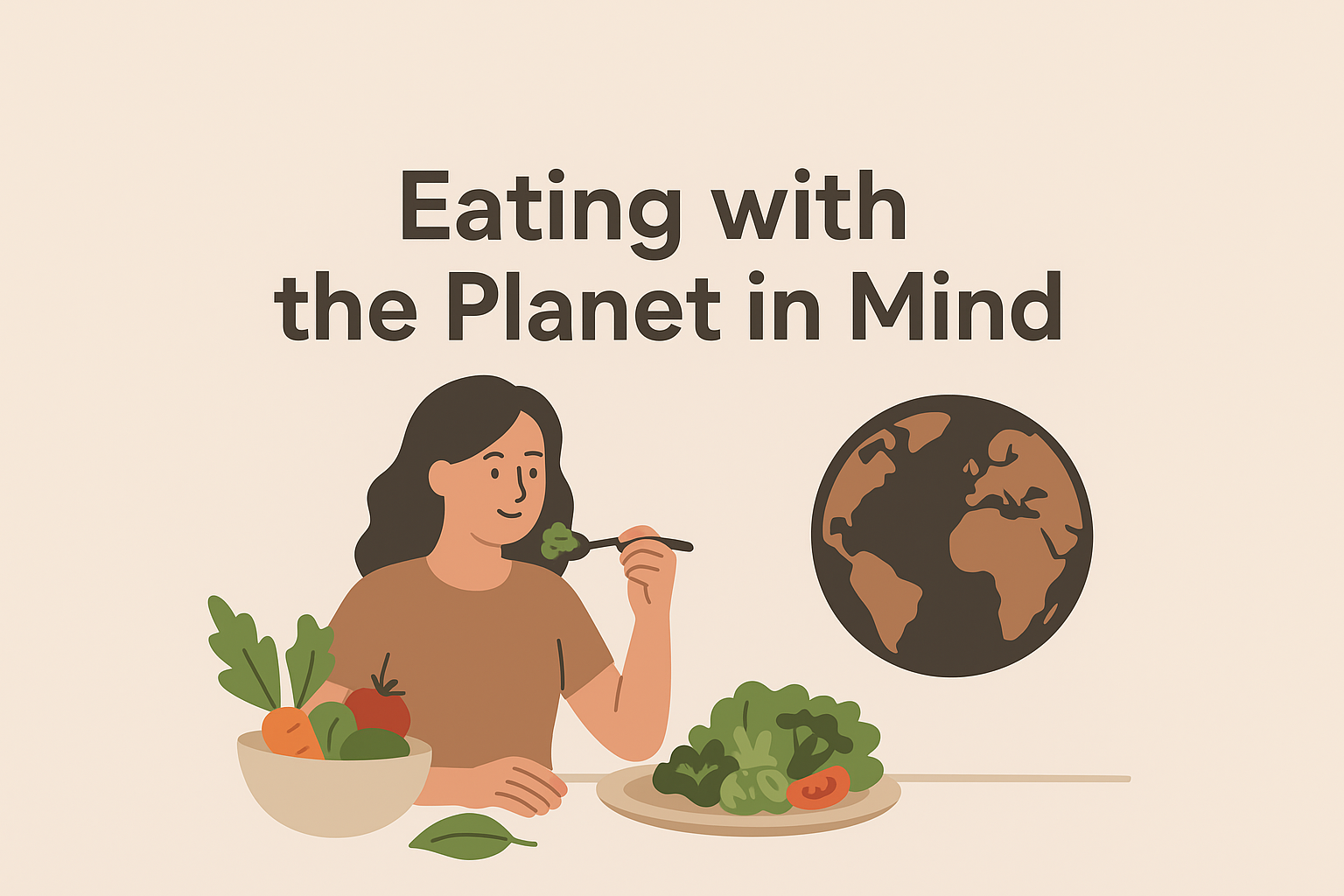Living a greener lifestyle isn’t about overhauling everything at once—it’s about small, realistic changes that add up over time. In 2025, sustainable living is more approachable than ever. With better access to reusable alternatives, smarter energy solutions, and greater awareness of waste, we can make choices that protect the planet without sacrificing convenience. This guide focuses on five key lifestyle areas—plastic, fashion, commuting, home energy, and food—so you can take away practical swaps that truly make an impact.
1. Breaking Free from Single-Use Plastics

Plastic waste remains one of the biggest environmental challenges of our time. Even with more recycling programs in place, most single-use plastics still end up in landfills or oceans. The best approach is to reduce how much we use in the first place.
Simple Swaps:
- Replace bottled water with a stainless steel or glass reusable bottle.
- Keep foldable cloth bags in your backpack or car so you’re never caught without one at the store.
- Switch from plastic wrap to beeswax wraps or silicone food lids.
- Bring your own coffee mug or thermos to cafés—many now offer small discounts for this.
- Refill your household cleaners and toiletries instead of buying new bottles.
These swaps don’t just cut down on waste, they also save money over time.
2. Rethinking Fashion Choices

The fashion industry creates a massive amount of pollution and waste. Fast fashion cycles encourage us to buy cheap, trendy clothing that wears out quickly, only to be tossed away.
Simple Swaps:
- Build a capsule wardrobe of timeless, versatile pieces that mix and match.
- Buy secondhand through thrift stores or online resale apps instead of purchasing new.
- Host clothing swaps with friends or local groups.
- Choose natural fibers like organic cotton, hemp, or linen over synthetics.
- Repair small tears, replace buttons, and learn simple sewing skills to extend the life of clothes.
In 2025, more brands are making transparency a priority. Look for companies that share details about their supply chains, pay fair wages, and use sustainable fabrics. Choosing better—not more—is the core of sustainable fashion.
3. Greener Ways to Get Around

Transportation accounts for a large portion of greenhouse gas emissions.hile not everyone can switch to an electric car overnight, there are still plenty of ways to reduce your commuting footprint.
Simple Swaps:
- Walk, cycle, or take public transport whenever possible.
- Explore electric scooters or e-bikes for short urban commutes.
- Carpool with coworkers, neighbors, or friends to cut down on solo trips.
- If you’re in the market for a new vehicle, consider a hybrid or fully electric car.
Some cities are redesigning infrastructure with bike lanes, electric bus routes, and ride-share hubs. Taking advantage of these changes not only reduces emissions but also creates healthier, less congested neighborhoods.
4. Smarter Energy Use at Home

Our homes are often the biggest source of energy consumption in our daily lives. From heating and cooling to running appliances, small adjustments can make a real difference.
Simple Swaps:
- Switch to LED lightbulbs, which last longer and use a fraction of the energy.
- Turn off lights and unplug electronics when not in use—phantom energy still drains power.
- Switch to a smart thermostat to cut energy use and lower bills.
- Add insulation or weatherstripping to reduce wasted energy.
- Consider installing solar panels or choosing a renewable energy plan from your utility provider if available.
Even small habits, like cooking with lids on pots or running full loads in the dishwasher, save energy. Over a year, these little choices make a noticeable dent in both emissions and utility bills.
5. Eating with the Planet in Mind

What we eat has a bigger environmental footprint than we might realize. Food production, especially meat and dairy, uses vast amounts of water, land, and energy. Shifting even part of our diet toward more sustainable choices makes a real difference.
Simple Swaps:
- Add more plant-based meals to your week—start with one or two days and build from there.
- Buy seasonal produce from local farmer’s markets, which often come with less packaging and lower transport emissions.
- Choose sustainably sourced seafood and meat from ethical farms.
- Store food properly and plan meals to reduce waste.
- Compost fruit and vegetable scraps to create natural fertilizer for gardens.
You don’t need to give up everything you love. The key is moderation and mindfulness. Choosing lentils or chickpeas instead of meat a couple times a week, for example, saves resources and adds variety to your meals.
Final Thoughts
Eco-friendly living in 2025 is less about sacrifice and more about intention. By making thoughtful choices in how we shop, travel, eat, and manage our homes, we all contribute to a larger movement toward sustainability. None of us can do it all, but each of us can do our part—and together, those small steps add up to real change.
Start with one swap. Carry a reusable water bottle. Try a plant-based meal. Take public transport instead of driving once a week. Each step builds momentum, and before long, these habits become second nature.
The future of the planet depends on the choices we make today. With simple, practical swaps, eco-friendly living can be achievable, rewarding, and impactful for all of us.







One response to “Eco-Friendly Living in 2025: Simple Swaps That Make a Big Impact”
[…] materials like insulation, roofing tiles, and composite lumber. Using recycled plastics helps reduce plastic waste and diverts it from landfills, contributing to a circular […]